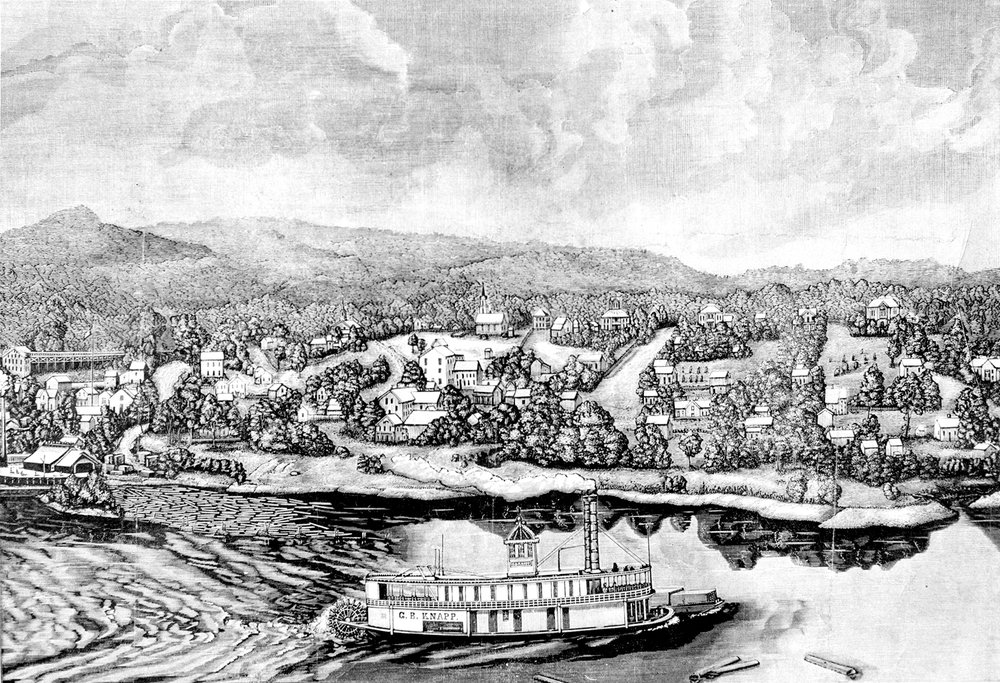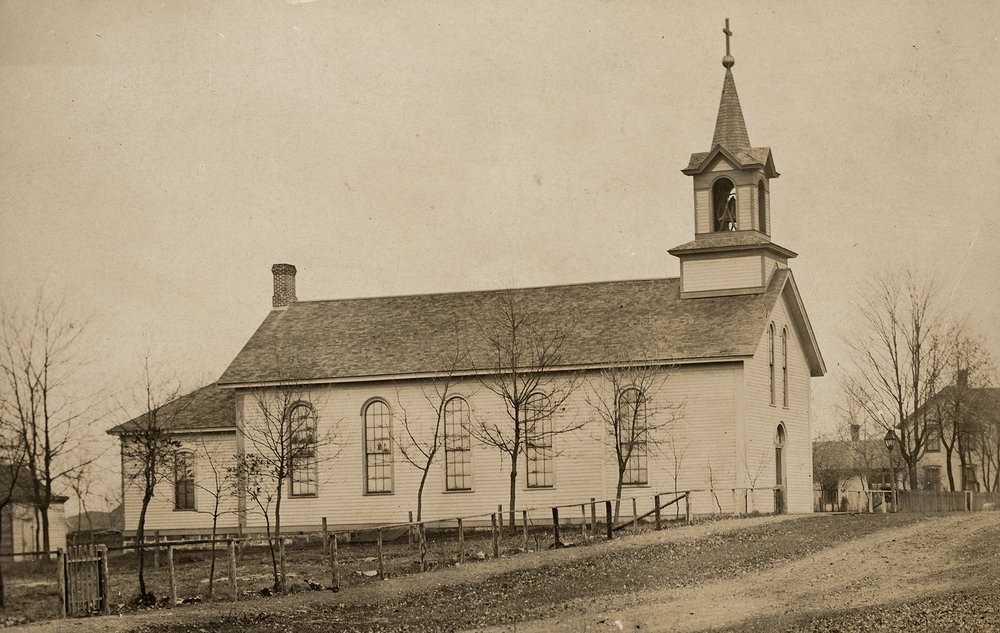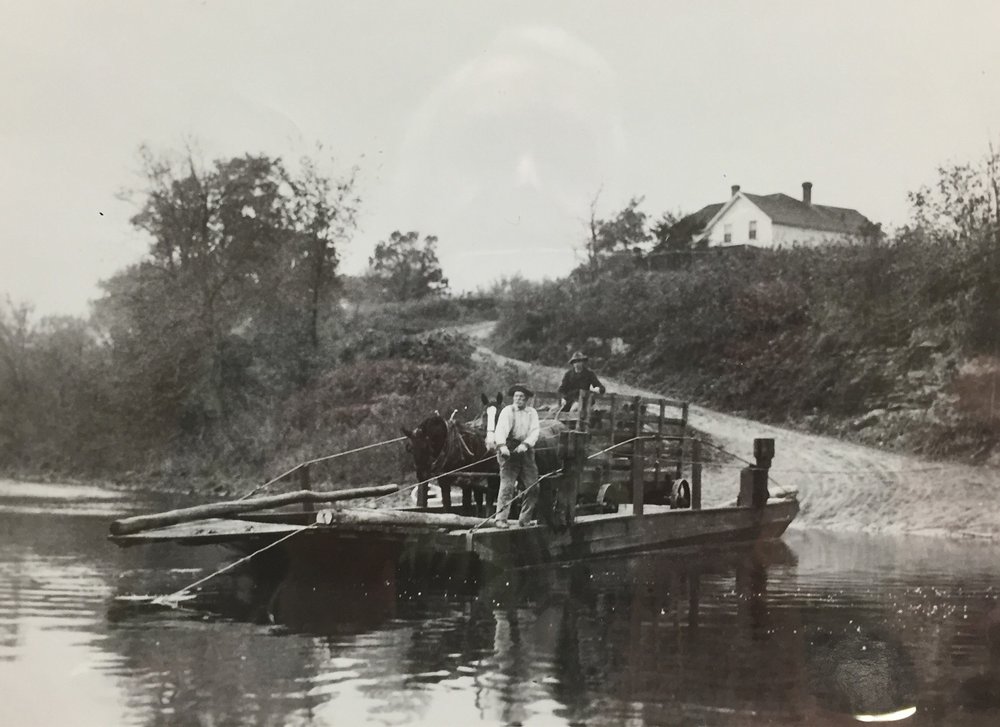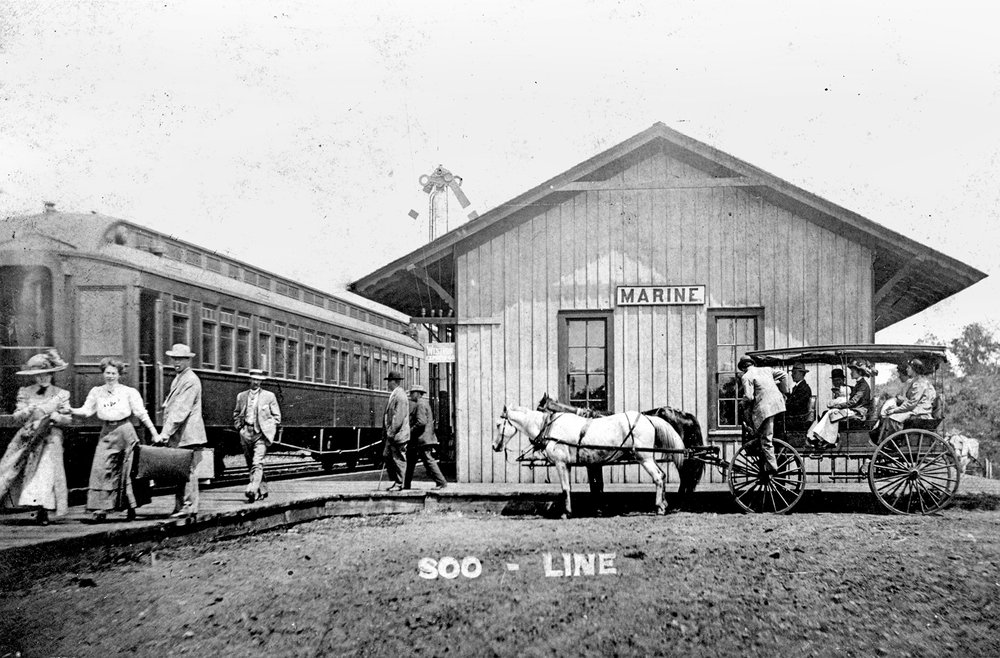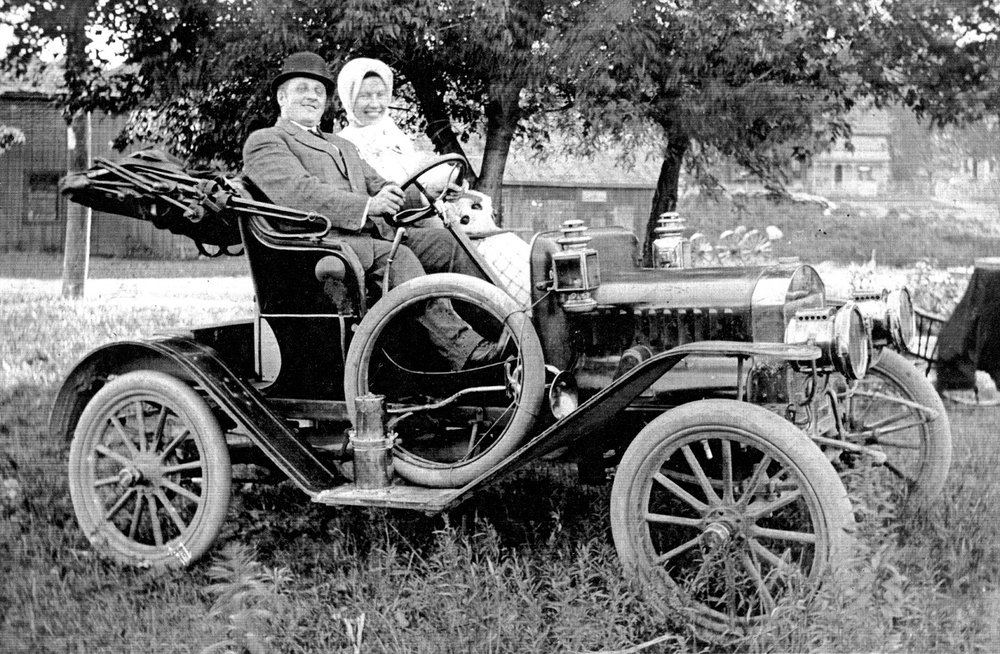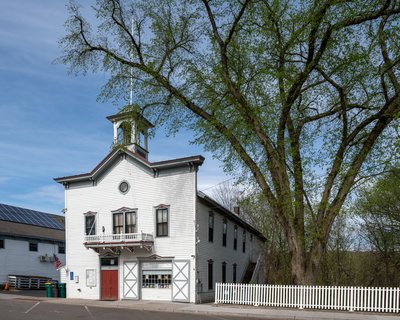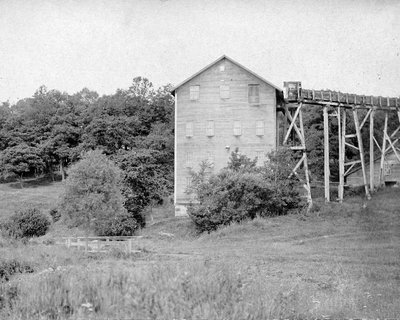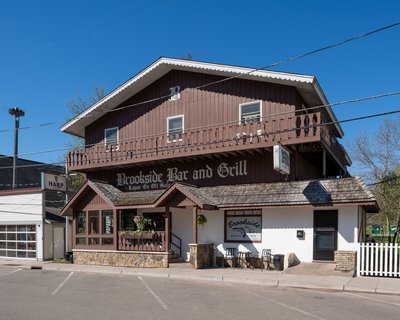The Eras of Marine’s History
Native Land
Humans have resided and traveled along the St. Croix River valley for between 12,000-9,000 years. This land was and continues to be the ancestral homeland of the Dakota People, and since at least the 17th Century, the Ojibwe as well. They used the St. Croix River for transportation, food, and for extensive trade networks. European traders started arriving in the mid-1600s. For nearly 200 years, they traded manufactured goods with native peoples for furs.
As beaver and other trade animals became scarce due to overhunting, the Dakota and Ojibwe inhabitants faced mounting trade debts and were forced to cede logging rights to the vast pine forests of their lands. In 1837, they signed a treaty with the United States that opened their lands to logging in exchange for 20 years of income and land-use rights for their people. Although the treaty was not fulfilled by the United States, it was immediately exploited by enterprising lumbermen from the east who would log out the former Dakota and Ojibwe pineries in just fifty years.
Pioneer Lumber Settlement
News that the 1837 treaties would open the vast pineries of the St. Croix River watershed to logging inspired a group of businessmen in Marine, Illinois to build a sawmill in the area. Those entrepreneurs chose the historic Marine Mill site for a lumber mill in 1838, when the land was still in Wisconsin Territory. The site was unique, as explained by the daughter of flour mill owner John Rose:
If you look at the map, you can see why Marine was chosen as a place to build a sawmill and why a settlement grew up here. Back in those wilderness times with their poor roads, if any, water transportation would be a ‘must’ for the sawmill people. The St. Croix River would float the logs down from the heavily timbered woods to the north. Our creek with the hill provided the needed falls to give the mills waterpower for sawing the logs. The river steamboats would carry the lumber to the market and lumber rafts floated down the river. They also brought settlers to raise food and work in the mills. [Laura Rose recollection, Sonbuchner, 2003]
When Marine Mills became part of Minnesota Territory in 1849, it had little more than a sawmill, general store, blacksmith, and hostelry. Lumber company owners Orange Walker, Albert and George Judd, Asa Parker and other “Yankees” dominated village business. In 1853, a new military road was built between Stillwater and Taylors Falls through Marine, allowing overland transportation. Sensing prosperity, the owners platted the village for settlement and turned their eye to developing a town to attract workers. They added a flour mill (1855) in partnership with James Gaskill to capture a growing wheat market and support the immigrant farmers.
Immigrant Town
Swedish immigrants arrived by steamboat in the 1860s, providing skilled labor for expanding mills and a growing community. The lumber company extended liberal credit and donated land to attract settlers. In the profitable 1870s, the company’s general store served the entire St. Croix Valley. A new livery stable serviced stage lines between Stillwater and Taylors Falls that brought more regular transportation and a steady flow of mail. In this decade, the town grew to over 400 people, with two hotels, four stores, one blacksmith, two carriage and wagon shops, four saloons, a brewery, a boat manufacturing shop, a cabinet shop, a cooper shop, and a shoe shop.
With pine forests stripped bare, the sounds of saws and planing mills died out by 1895. Yet the town thrived, having become agricultural with a flour mill and local business economy. Laura Rose, whose father ran the flour mill in those days mused:
I wonder if children were happier then. There were no automobiles or snowplows; we would hitch our sleds to farmers’ bobsleds and go coasting. We had the freedom to roam in anyone’s pasture. The [Mill Stream] ravine was our place to wade and explore. [Sonbuchner, 2003]
Metro Retreat
Without its lumber mills, influential citizens decided the town should be renamed more appropriately to Marine on St. Croix. The post office made that change in 1917.
After the mills were gone, the landscape that inspired them attracted tourists and new residents. At first arriving by rail and then automobile in the early 1900s, people seeking retreat from the Twin Cities headed to Marine for the summer cottages, inns and restaurants springing up around the village.
The 1910-20s brought the convenience of telephones and electricity. Former renters began to build summer homes. As suburbia expanded in the 1940s, new residents moved here permanently and commuted.
In 1951, the new State Highway 95 bisected the town, causing the historic buildings west of Judd St to be razed. Yet much of Marine retains the feeling of an early river town that made it a popular place to settle and to visit.
— Andrew Kramer and the Marine Historic Signage Committee
